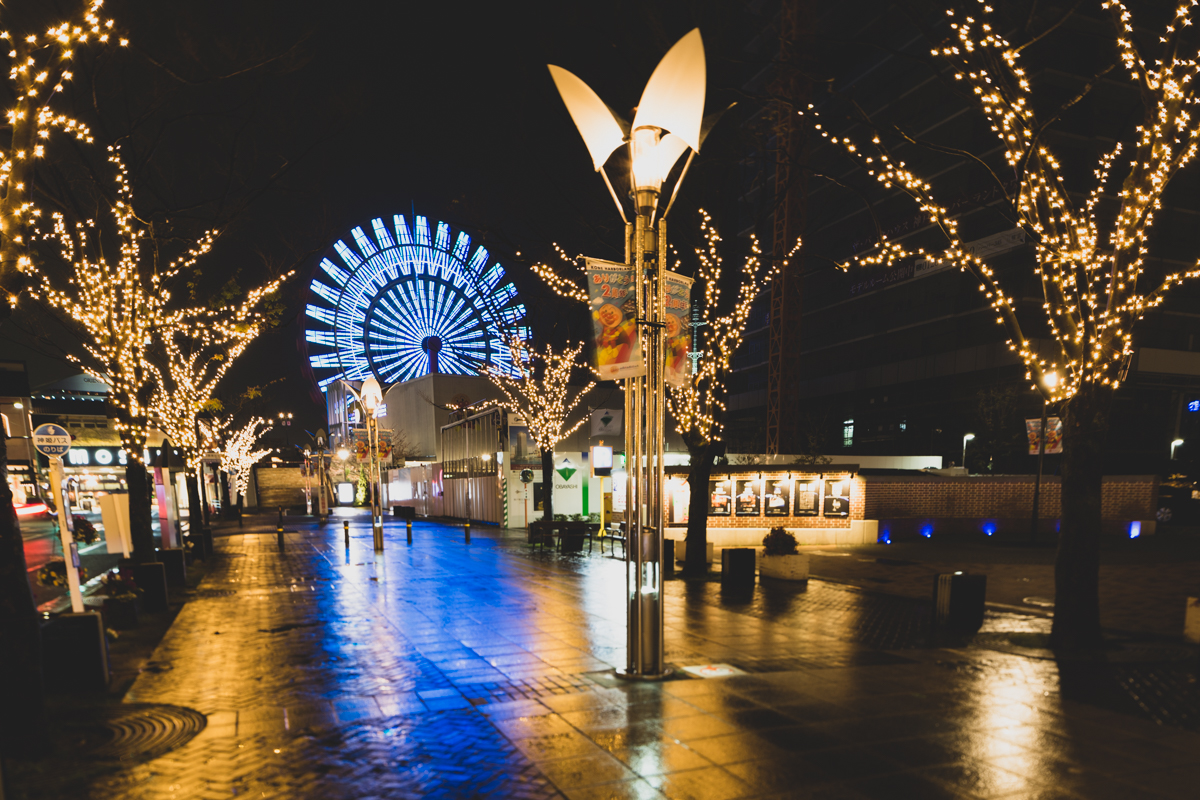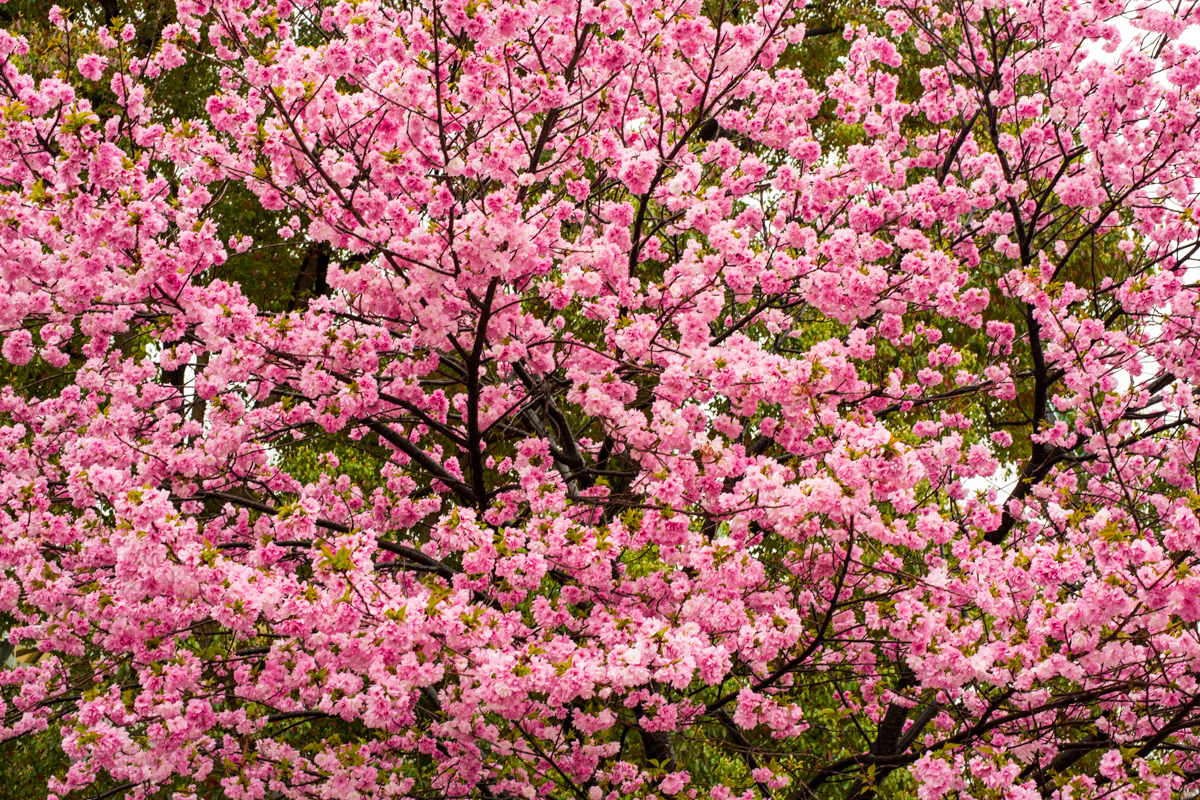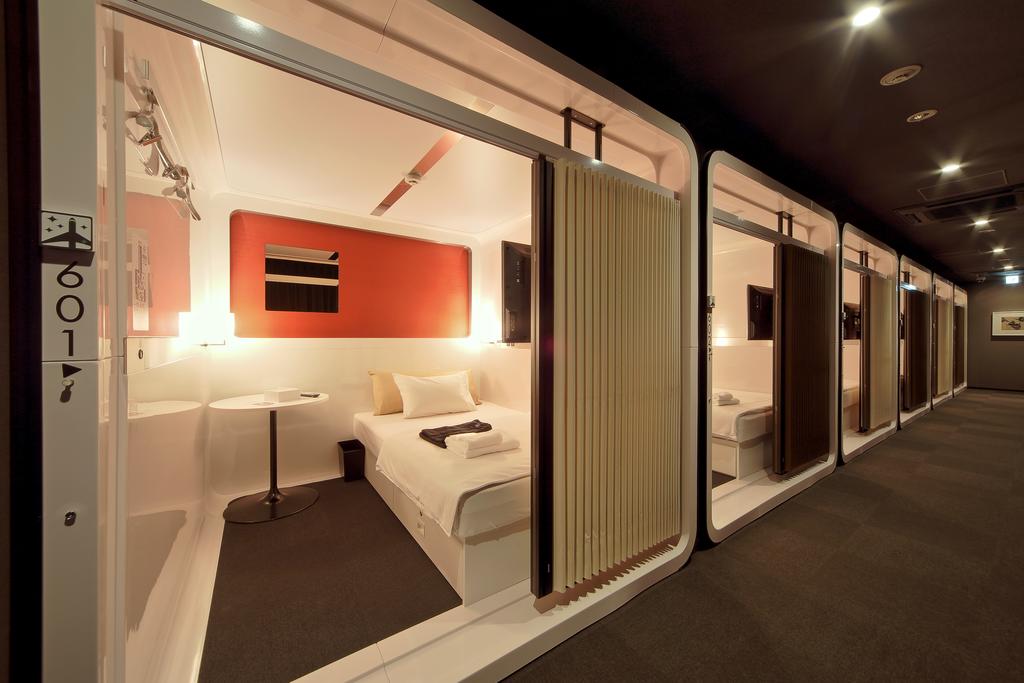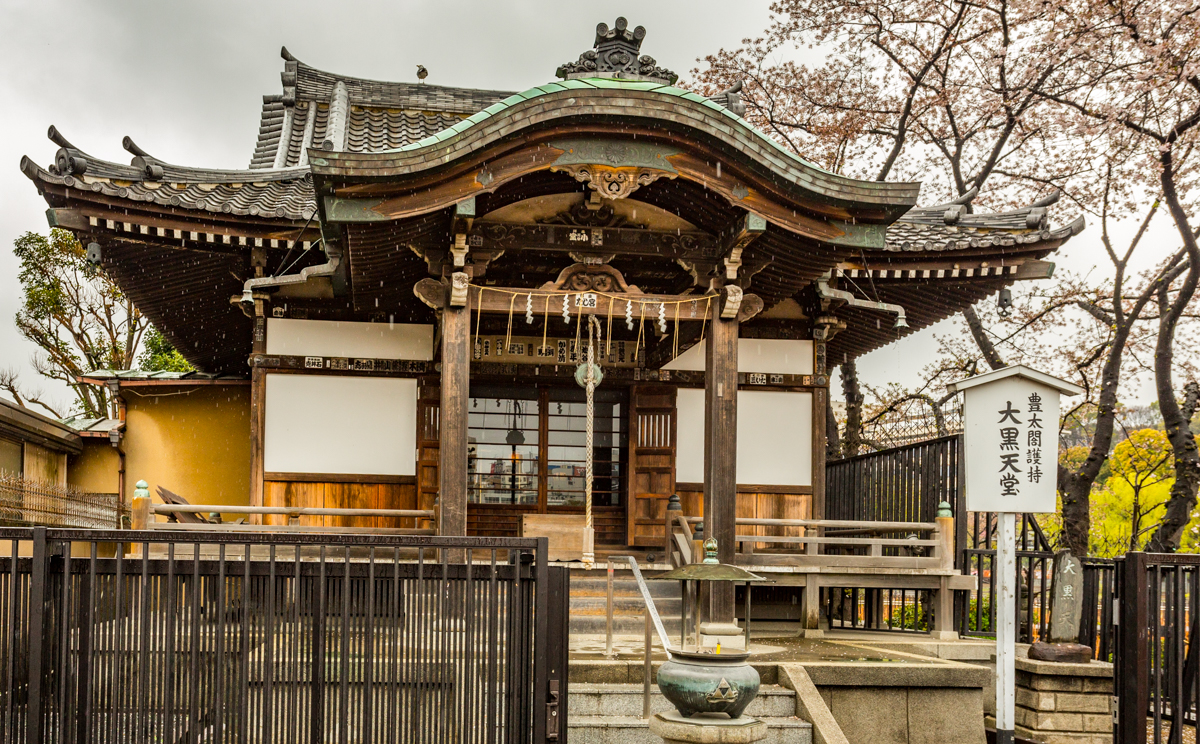Sakura time in Japan
Spring in Japan is the time when the Cherry Blossoms bloom. The lovely Cherry blossoms range in colour from white to vibrant shades of pink. The cherry blossoms in full bloom are a spectacular sight to behold. Hanami or Cherry Blossom viewing is a Japanese tradition where families and friends gather , sometime dressed in traditional Japanese Kimonos and after praying at their favourite shrines have picnics with food drink and song under the canopies of cherry blossom trees.
After seeing some inspiring images of Sakura(Cherry Blossoms) from Japan during an exhibit by another photographer I was so taken in by the photographic potential that I decided to travel to Japan during the Spring of 2015.
Shinjuku Gyoen Scene
Getting the best Sakura viewing takes some planning and a little luck too. Predicting the exact peak of the season is difficult as the blooms are effected by the weather around the time. The Temperature, humidity and precipitation all determine when the blossoms are in full bloom and the peak lasts just a day or two before the trees start shedding the flowers.
Also the location and type of trees in the region also dictate when the the blossoms will peak. The trees in the south bloom first progressing north as the temperatures rise . The Sakura time is anywhere between the end of March to the first half of April.
The Japan Meteorological Corporation cherry blossom releases a forecast based on various factors, such as the low temperatures during autumn and winter, cumulative temperatures, past area data, and cherry tree growth status.
For 2019, Tokyo’s sakura blossoms are expected to start opening around March 21, with peak bloom around March 29.
Getting There
I travelled to Tokyo on Singapore Airlines. The Singapore to Tokyo flight takes about six and half hours. I reached Tokyo in the morning and reached my hotel before check in time so had to wait a a little while before I got my room. I had planned to stay in Tokyo for just a couple of nights to get my bearings before heading off to Kobe which would be my base for the first half of my Sakura Photography.
Kobe Waterfront scene
Kobe is a coastal town located on the North Side of Osaka Bay and forms part of the Keihanshin metropolitan area along with Osaka and Kyoto. The city is the point of origin and namesake of Kobe beef, as well as the site of one of Japan's most famous hot spring resorts, Arima Onsen. Kobe was one of the main cities for trade with the West after the end of Japan’s Seclusion policy in 1853. Kobe’s role has diminished since then but still remains an important port city and has reminders of it heyday such as the Oriental Hotel where i stayed. Chinatown in Kobe is a great place to get some good food.
Where to Stay at Kobe
Luxury
Kobe Meriken Park Oriental Hotel
Hotel La Suite Kobe Harborland
Budget
Kobe Waterfront Scene
From Kobe I travelled to Kyoto and Osaka by the Shinkansen (Bullet Train) to photograph the Cherry Blossoms. The Shinkansen is the best mode of travel in Japan for Point A to B travel. Highways can be very congested at times. The Subway is a good way to get around inside Tokyo. I decided on when to visit each location based on the peak blooming calendar by the Japanese Met department. I made the peak correctly for Osaka but missed the peak by a day or two in Tokyo and Kyoto. i Still managed to get some decent photographs but i will be going back again as I feel there are much better images to be taken.
Night Scene at Kobe
Kyoto
Kyoto City , is the capital city of Kyoto Prefecture, located in the Kansai region of Japan. It is best known in Japanese history for being the former Imperial capital of Japan for more than one thousand years, as well as a major part of the Kyoto-Osaka-Kobe metropolitan area.
Getting there
Take the Shinkansen train from Tokyo to Kyoto.
Where to Stay in Kyoto
Here are a few accommodations with high ratings
Luxury
Budget
Tourists taking in the beauty of the Cherry blossoms along Philosophers path, Kyoto
In traditional dress for Hanami
Japanese Girl in Traditional Kimono as part of the Spring Celebrations
Cherry Blossoms and Sign along the Philosophers Path
Kyoto has a long recorded history dating as far back as the 6th century A.D . Kyoto was the capital of Japan till the imperial court was moved to Tokyo in 1869.
Kyoto has some of the best Hanami spots in Japan. These include The Philosophers Path, Maruyama Park, Arashiyama, Haradani-en Garden, Okazaki Canal,Kyoto Botanical Garden, Ninnaji and other spots.
I entered my efforts around the Philosophers Path as I was there for just a day trip.
The Philosopher's Walk ( Tetsugaku-no-michi) is a pedestrian path that follows a cherry-tree-lined canal in Kyoto, between Ginkaku-ji and Nanzen-ji. The route is so-named because the influential 20th-century Japanese philosopher and Kyoto University professor Nishida Kitaro is thought to have used it for daily meditation.
It passes a number of temples and shrines such as Hōnen-in, Ōtoyo Shrine, and Eikan-dō Zenrin-ji. It takes about 30 minutes to complete the walk, although many people spend more time visiting the sights along the way.
On the northern part of the walk, there are good views of the nearby Daimonji. The walk is a popular destination for tourists and locals, especially during hanami.
Osaka
Cherry Blossoms at Osaka Mint Bureau
Osaka is a city in the Kansai region of Japan. It is the capital city of Osaka Prefecture and the largest component of the Keihanshin Metropolitan Area, the second largest metropolitan area in Japan and among the largest in the world with over 19 million inhabitants.
Osaka too has a long history with records from the 6th Century AD.
Pink blossoms in peak at Osaka Mint Grounds
The best Sakura viewing locations in Osaka include Osaka Mint Bureau, Kema Sakuranomiya Park, Osaka Castle, Expo 70 commemorative Park. I focused my visit on the Osaka Mint Bereau and Kema Sakuranomiya park locations.
For 2019 the expected peak viewing period is March 29 - April 6
Kema Sakuranomiya Park along the Osaka Riverside
Osaka River cruises are a great way to take in the Cherry Blossom trees lining the riverside
Tokyo
Tokyo, Japan’s busy capital, mixes the ultramodern and the traditional, from neon-lit skyscrapers to historic temples. The opulent Meiji Shinto Shrine is known for its towering gate and surrounding woods. The Imperial Palace sits amid large public gardens. The city's many museums offer exhibits ranging from classical art (in the Tokyo National Museum) to a reconstructed kabuki theater (in the Edo-Tokyo Museum).
The best spots for cherry blossom viewing include Ueno Park , Shinjuku Gyoen, Chidorigafuchi and Kitanomaru Park, Sumida Park , Meguro River , Rikugien Garden etc. I visited Ueno Park and Shinjuku Gyoen during my trip. Plan to visit some of the other locations during my next trip.
Where to Stay in Tokyo
There are a wide variety of hotels to choose from in Tokyo. And there are a number of localities to choose from. Decide what you will be doing first and then decide on your place of stay accordingly.
The Hyatt Regency Tokyo is one of the best hotels in Tokyo with massive luxurious rooms and is well located with a short walk from parks, restaurants and shopping and also presents good value for money.
other options include
Luxury
Tokyo is famous for its Capsule Hotels which are tiny rooms which tend to be very affordable and a good option if you are traveling single or with friends and want to save some money. These are very popular with people coming from out of town town to work in Tokyo during the week. These have also now become popular among backpackers and digital nomads.
First Cabin Nishiazabu for men
nine hours woman Kanda for women
Ueno Park
Ueno Park Scene
The park has some 8,800 trees, including Ginkgo biloba, Cinnamomum camphora, Zelkova serrata, Formosan cherry, Somei-Yoshino cherry, and Japanese cherry. There is a further 24,800 m2 of shrubs. Shinobazu Pond is a small lake with an area of 16 ha, extensive lotus beds, and marshland. It provides an important wintering ground for birds. Species commonly found include the tufted duck, Eurasian wigeon, northern pintail, common pochard, little grebe, great egret, and great cormorant. The Baer's pochard, ring-necked duck, and American wigeon have also been recorded.
Sakura viewers at Ueno Park
The central island houses a shrine to Benzaiten, goddess of fortune, modelled on Chikubu Island in Lake Biwa. The area was once full of "rendezvous teahouses", equivalent of the modern love hotel.
Shrine Near Ueno Park
After the Pacific War the pond was drained and used for the cultivation of cereals and subsequently there were plans to turn the site into a baseball stadium or multi-storey carpark. The lotus pond was restored in 1949, although much of it was again accidentally drained in 1968 during work on a new subway line.
A wedding Photoshoot on at Ueno Park
In all there are some eight hundred cherry trees in the park, although with the inclusion of those belonging to the Ueno Tōshō-gū shrine, temple buildings, and other neighbouring points the total reaches some twelve hundred.
Shinjuku Gyoen
Shinjuku Gyo-en is a large park and garden in Shinjuku and Shibuya, Tokyo, Japan. It was originally a residence of the Naitō family in the Edo period. Afterwards, it became a garden under the management of the Imperial Household Agency of Japan. It is now a national park under the jurisdiction of the Ministry of the Environment.
On May 21, 1949, the garden became open to the public as a national park. It came under the jurisdiction of the Ministry of the Environment in January 2001, with the official English name "Shinjuku Gyoen National Garden". The official Japanese name remains Shinjuku Gyoen, where gyoen means "imperial garden".
The garden, which is 58.3 hectares in area with a circumference of 3.5 km, blends three distinct styles: a French Formal and English Landscape in the north and to the south a Japanese traditional. A traditional Japanese tea house can be found within the gardens.
Typical Spring scene in Tokyo
Tips for planning your Sakura Viewing
I decided on when to visit each location based on the peak blooming calendar by the Japanese Met department. I made the peak correctly for Osaka but missed the peak by a day or two in Tokyo and Kyoto. i Still managed to get some decent photographs but i will need to make another trip sometime and plan for a longer stay and hopefully make the most of it.
Japan the Capital of Vending Machines. The only place I have seen hot canned coffee in a vending machine.perfect for the cold mornings during spring.
As Sakura time is a peak season in Japan all the hotels in Kyoto and other popular Sakura Viewing places tend get booked early. I ended up staying at Kobe and use that as a base due to lack of availability of good rooms in Kyoto. I travelled to Kyoto and Osaka on the Shinkansen (Bullet Train) which was a very cost effective and quick way to travel. The services work like clockwork and are very comfortable.
Check the various Sakura viewing guides before you book your tickets and accommodation. Here is a link to a Sakura viewing guide for 2019.
Get an English Speaking Guide to get the most out of your trip. I plan to do that during my next trip.
Sakura viewing is very popular among the locals and tourists alike. Expect to see crowds in most venues. So get there early to get people free shots.
Japan is expensive You can save money in Japan by living like a local. Staying in a hostel or capsule hotel , buying a rail pass, eating relatively cheap food, and visiting a few attractions will cost around $100 USD per day minimum. I would budget at least 150$USD per day and if you are looking for amore luxury experience budget $300-400 per day .
Japan Currency : YEN
100 $USD = SGD 137.2, = INR 7000 = 11,112.86 YEN as of this writing.
Japan Time : Japan is known as the land of the rising sun as it one of the first places to see sunrise in the world at GMT+9
One of many photographers who come to shoot the Cherry Blossoms
























